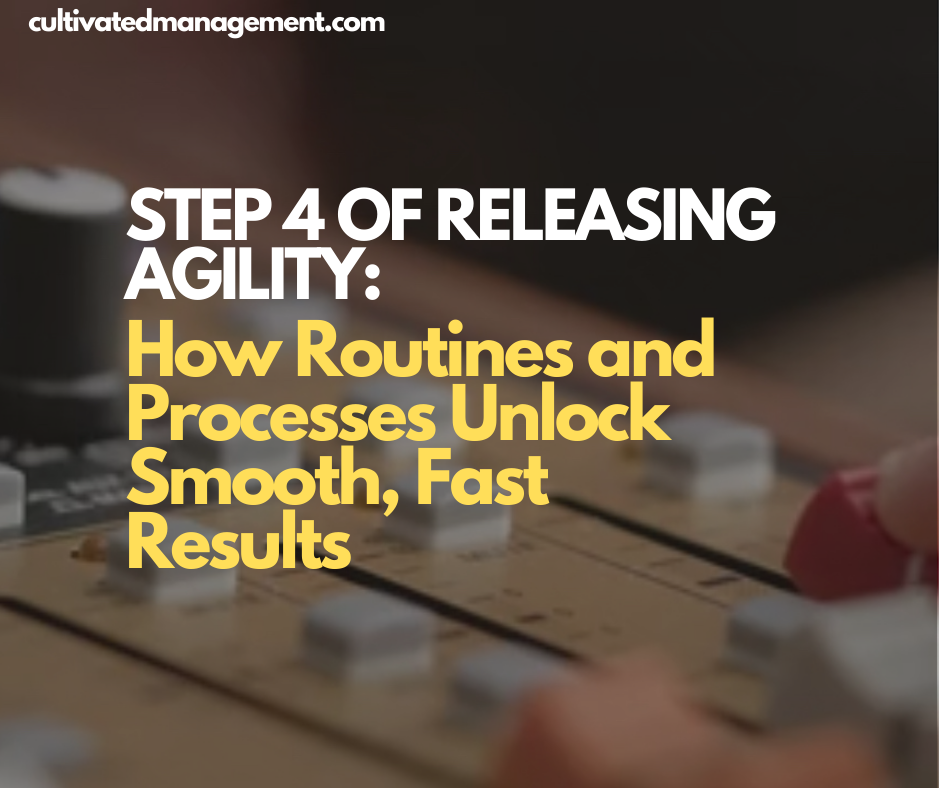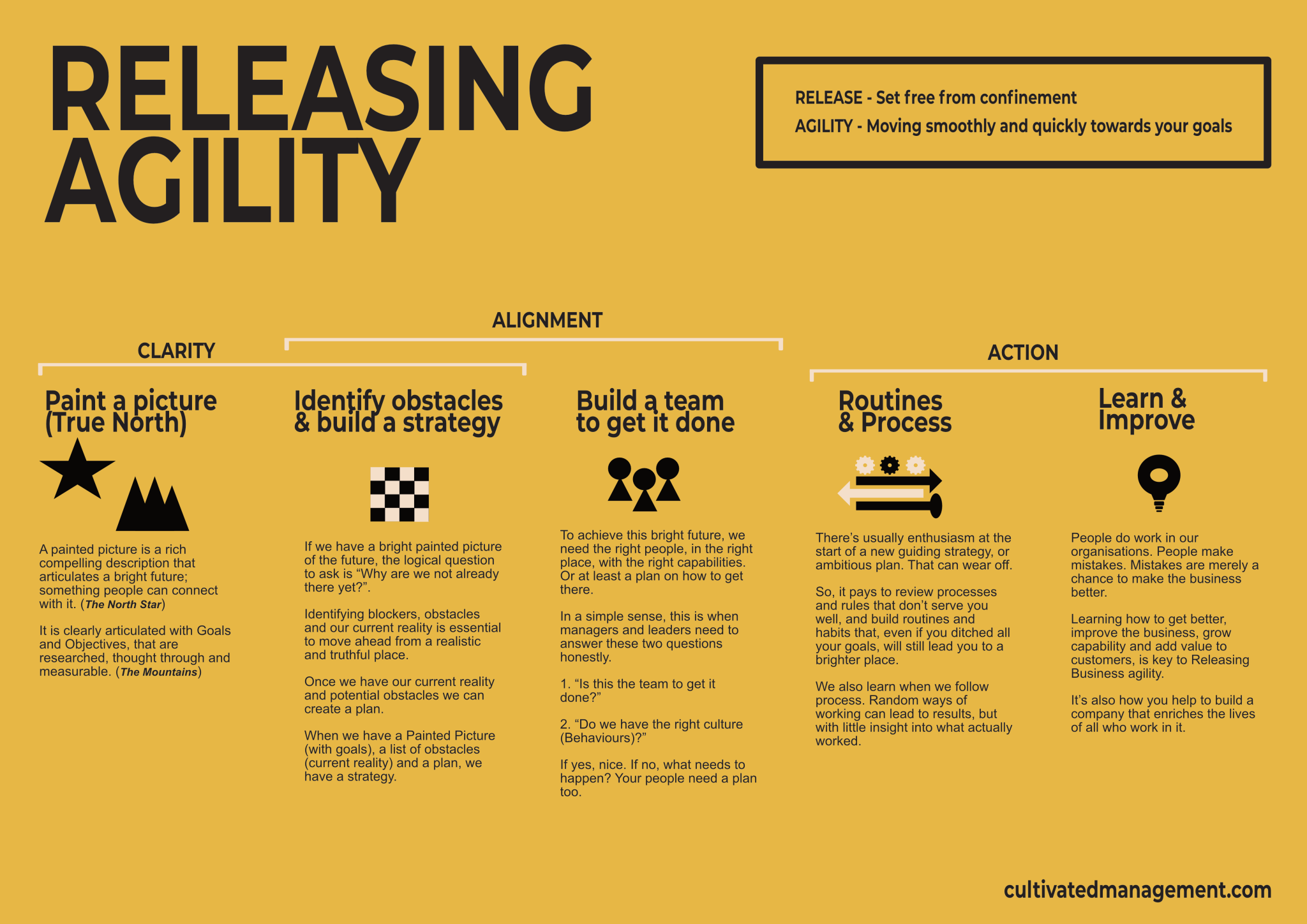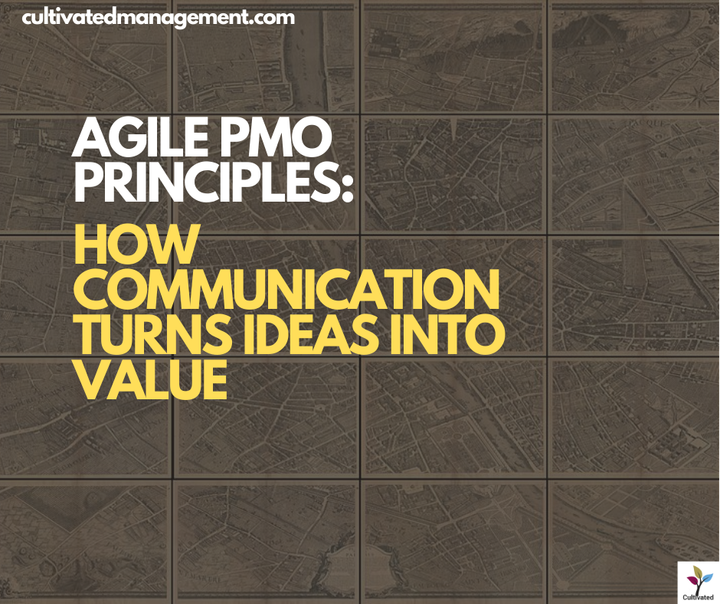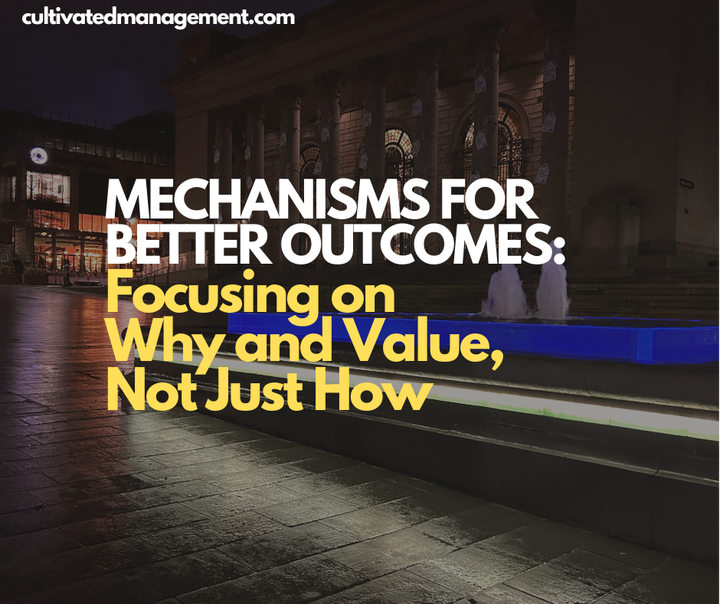Step 4 of Releasing Agility: How Routines and Processes Unlock Smooth, Fast Results
Discover how to streamline routines and processes to remove obstacles, reduce bureaucracy, and empower teams to move smoothly and quickly toward business goals. Learn practical examples and insights for leaders and managers to release organisational agility.

In this mini-series on Releasing Agility, we’ve already explored the first three steps of the model I use with clients around the world to move smoothly and quickly towards their goals.
This isn’t a prescriptive framework. It’s a thinking model — a way for leaders, managers, and even individuals to identify obstacles and remove them, enabling faster, more effective progress.
Step four focuses on routines and processes. This is where organisations often spend a lot of time, energy, and consultancy fees. People debate whether to use agile, waterfall, or hybrid models. They design workflows and meeting cadences. They argue, debate, plan and discuss the mechanics of the business. Theories abound - even those with no utility.
But here’s the catch: all of this effort is wasted if the first three steps haven’t been addressed.
Before investing in routines and processes, leaders need clarity and alignment:
- A bright, compelling picture of the future – i.e. where are we going?
- A clear understanding of the obstacles standing in the way – i.e. what's stopping us from achieving this bright future?
- The right team in place — or a plan to develop or acquire the right people – i.e. This is the team to get it done.
Once those elements are in place, we can focus on routines and processes that actually support progress rather than slow it down.
Listen to the podcast here, or read on for more:
Why routines and processes matter
Good routines and processes remove unnecessary thinking and decision fatigue.
They create a reliable framework so that employees don’t have to wonder how to do things — they simply do. When routines are well designed and sustainable, they almost act as autopilot toward success.

In organisational terms, many processes are the very things that block agility. Red tape, unnecessary approvals, long processes, value chains that don't deliver value and complex reporting structures often exist not because the work demands it, but because the system has been built to protect people from fear of making mistakes or being reprimanded.
Consider decision-making. In many organisations, even small decisions escalate up the chain. Steercos, governance boards, and approvals slow progress, frustrate employees, and distract from actual goals.
Instead of asking, how can we make decisions faster?, managers often add more stages. The result: slower execution, disengaged teams, and dissatisfied customers.
It's a form of self-sabotage.
A real-world example
I worked with a company whose customer support process had 14 stages. Each customer issue took three to four weeks to resolve. Why? Because managers demanded weekly reports detailing how many cases were in each team.
To avoid looking bad in the reports, employees shuffled cases around just before reporting time. The process became a game of avoidance rather than service.
The outcome? Wasted human potential, frustrated employees, and unhappy customers.
The solution was simple: remove unnecessary reporting, streamline the process to four stages, and empower the team to focus on actual customer needs. Result? Cases were resolved in one to two days, customer satisfaction improved, and employees were far happier in their roles.
This is a textbook example of releasing agility: identify the obstacle, remove it, and design processes that support smooth, quick outcomes.
👉 Ready to move faster towards your business goals while building a workplace people love? I help managers and leaders get there—through coaching, consulting, and training. See how I can help you.
Routines and processes in recruitment
Processes aren’t limited to operations — they touch every aspect of business. Take recruitment. When I first led a team, our hiring process took 1–3 months. By the time we made an offer, top candidates had already accepted positions elsewhere.
We analysed the bottlenecks, simplified decision points, tracked cycle time and introduced clear actions and timelines. Result? From first contact to offer or rejection, the process averaged two weeks. Candidates were happier, quality improved, and hiring became more predictable.
👉 I write about this and a whole load more about recruiting and hiring in my book - Join Our Company.
The principle is the same: reduce unnecessary complexity, remove friction, and create routines that allow a focus on outcomes rather than process.
Routines and processes in personal life
This concept applies just as much to individuals. Think about your own habits and routines. If you consistently prepare your gym kit the night before, go at the same time, and follow a simple, repeatable workout plan, you don’t waste energy debating what to do.
Over time, these small routines compound. In a year, you’ll be healthier, stronger, and more consistent. Similarly, well-designed workplace routines free mental energy, allowing teams to focus on high-value work rather than the mechanics of execution.
Principles for designing effective routines and processes
- Remove unnecessary complexity – If a process doesn’t help achieve your goals, it’s a candidate for removal or simplification.
- Focus on outcomes, not reporting – Avoid designing processes to appease reports or metrics that don’t drive value.
- Empower decision-making – Ask why decisions escalate to leaders and remove fear or improve the skills that are preventing people making decisions.
- Streamline repetitive tasks – Reduce variations in how tasks are done, so employees can follow a proven path without reinventing the wheel.
- Test, refine, and trust – Implement processes, observe outcomes, and adjust. Once proven, allow them to run reliably without constant oversight.
A golden place for teams
When routines and processes are aligned with clear goals, the right obstacles are addressed, and the team is capable and motivated, something magical happens: employees begin improving the business themselves.
They identify inefficiencies, streamline their own workflows, and proactively solve problems — all without constantly seeking managerial approval.
This is the hallmark of agility: teams moving smoothly and quickly because the systems around them are enabling, not constraining.
Step 4 in context
Remember, step four only works if the first three steps are in place. If you build routines and processes without:
- A compelling vision,
- A clear understanding of obstacles, and
- The right people,
…you risk creating bureaucracy that slows progress rather than accelerates it. Or you may end up moving smoothly and quickly in the wrong direction – or even worse, you make the ineffective processes more efficient.
Think of routines and processes as the engine of your organisation. A powerful engine is useless if it’s pointing in the wrong direction or lacks fuel.
Summary
Step four of Releasing Agility is about building routines and processes that:
- Remove unnecessary mental load,
- Reduce bureaucracy and red tape,
- Empower decision-making,
- Free energy for high-value work, and
- Allow teams to move smoothly and quickly toward their goals.
Do this well, and you’ll create a team that not only follows processes efficiently but also improves them, contributing to better outcomes for the business and its people.
Remember, this model isn’t a prescription. It’s a thinking tool to help you as a leader or individual identify what’s stopping you from moving smoothly and quickly — and remove it.
👉 Ready to move faster towards your business goals while building a workplace people love? I help managers and leaders get there—through coaching, consulting, and training. See how I can help you.


